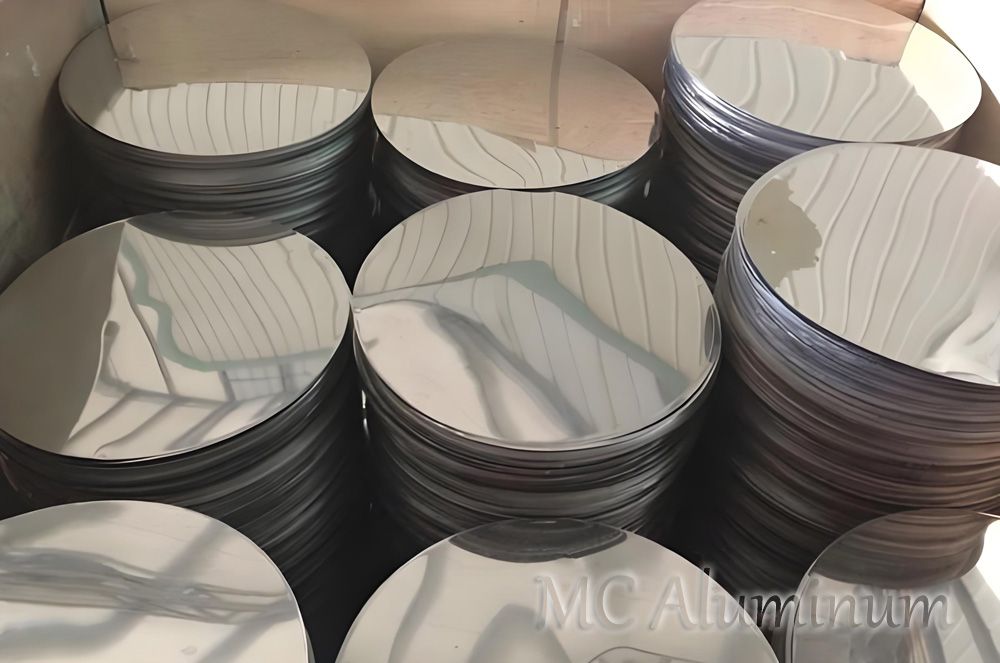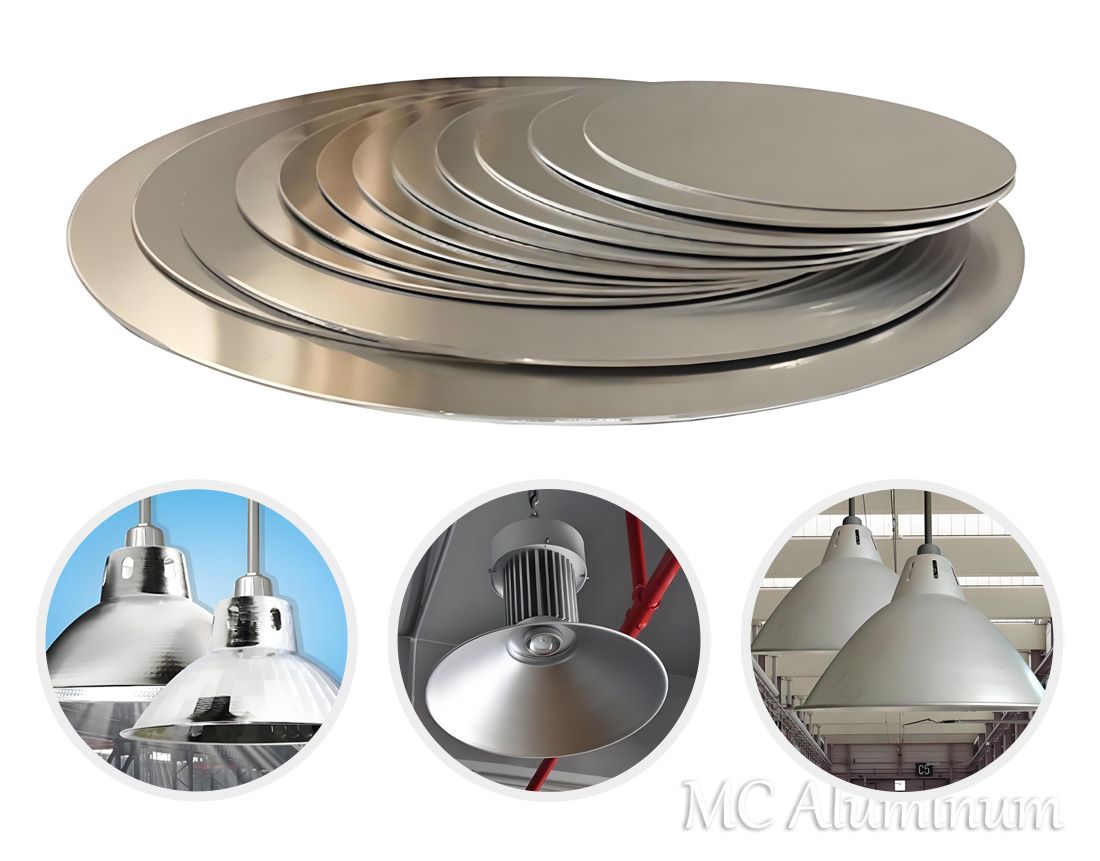Best Aluminum Circles for Lampshades
In the modern lighting industry, aluminum circle discs serve as the core raw material for lampshade reflectors, lamp housings, and other components, meeting the stringent requirements of aesthetics, lightweight design, and efficient heat dissipation.
Lampshade manufacturing commonly uses 1060 aluminum circles, 3003 aluminum circles, and 5052 aluminum circles. These circles are processed by stamping, deep drawing, and spinning to form the desired three-dimensional lampshade shapes. MC Aluminum can produce aluminum discs with diameters ranging from 50 mm to 1500 mm and thicknesses from 0.3 mm to 6.0 mm.
After polishing or anodizing, lampshade aluminum circle discs can reach a reflectivity of 85-95%, maximizing light concentration and directionality, thereby significantly improving lighting efficiency and serving as effective reflector materials.

Lampshade Aluminum Disc Manufacturing Processes
Two primary metal forming technologies transform flat aluminum discs into elegant lampshades:
Deep Drawing:
In this process, an aluminum disc (blank) is placed on a forming die, and a punch presses it into the cavity. This draws the metal into a cup- or shell-shaped form. Deep drawing is ideal for producing seamless lampshades with uniform wall thickness and complex shapes. The deep drawing quality (DC) of aluminum discs is critical to successful, crack-free forming.
Metal Spinning:
In metal spinning, the aluminum disc rotates at high speed on a lathe. Forming tools press against the disc, gradually shaping it over a mandrel (die with the desired internal shape). Spinning is especially suitable for making conical, hemispherical, and other axisymmetric shapes. It offers greater design flexibility and is often more cost-effective for small-batch production or prototyping.
Why Aluminum Discs Are the First Choice for Lampshade Manufacturing
1. Excellent deep drawing and spinning performance : Aluminum's plasticity makes it ideal for manufacturing lampshades requiring deep forming, helping avoid defects like wrinkles or cracks.
2. High surface quality and reflectivity : Clean and bright surfaces provide superior reflectivity, critical for light efficiency in lampshades.
3. Lightweight yet strong : With a density about one-third that of steel, aluminum ensures lampshades are lightweight for easy installation and transport, while still maintaining strength.
4. Corrosion resistance and durability : A natural oxide film forms on aluminum, protecting against corrosion and extending service life both indoors and outdoors.
5. Excellent thermal conductivity : Aluminum effectively dissipates heat generated by lighting, protecting internal light sources and electronics, enhancing stability and lifespan.
Lampshade Aluminum Disc Product Information
| Alloys | 1050, 1060, 1070, 3003, 3004, 5052, etc. |
| Temper | O, H12, H14, H18, H24, H32, etc. |
| Thickness (mm) | 0.3-8.0 |
| Diameter (mm) | 80-1500 |
| Processing | Cold rolled (CC) and hot rolled (DC) |
| Custom sizes | Available upon request |
| Surface finishes | Polished, color-coated, or anodized |
| Applications | Pressure vessels, cookware, high-voltage components, furniture, etc. |
| Payment terms | T/T at sight or L/C |
| Delivery time | Within 30 days after deposit and L/C receipt |
| Packaging | Standard export wooden pallets |
| MOQ | 1-3 tons |
Application Fields
Indoor lighting: Chandeliers, ceiling lights, decorative lampshades.
Outdoor lighting: Street lights, garden lamps, solar lampshades.
Industrial lighting: Mining lamps, warehouse reflectors.
Commercial lighting: Display lights, stage lamps, advertising spotlights.

Key Considerations for Wholesale Aluminum Discs
(1) Thickness and diameter
Lampshade aluminum discs typically range from 0.5 mm to 6.0 mm in thickness and 100 mm to 1200 mm in diameter. Selection depends on design dimensions and strength requirements.
(2) Material temper
O temper (annealed) aluminum is softer with excellent ductility, ideal for deep drawing. H temper (work-hardened) aluminum offers higher strength.
(3) Surface treatment
High surface quality is essential, free from scratches, oil stains, oxidation, or spots. Common surface finishes include:
| Finish Type | Description |
| Polished | Smooth, glossy, mirror-like surface |
| Brushed | Satin-like textured appearance |
| Anodized | Durable, corrosion-resistant, available in various colors |
| Coated | Durable, uniform, colorful surface with customizable options |
A reliable supplier is essential. Factors such as reputation, quality assurance, and competitive pricing should be compared.







Contact Us